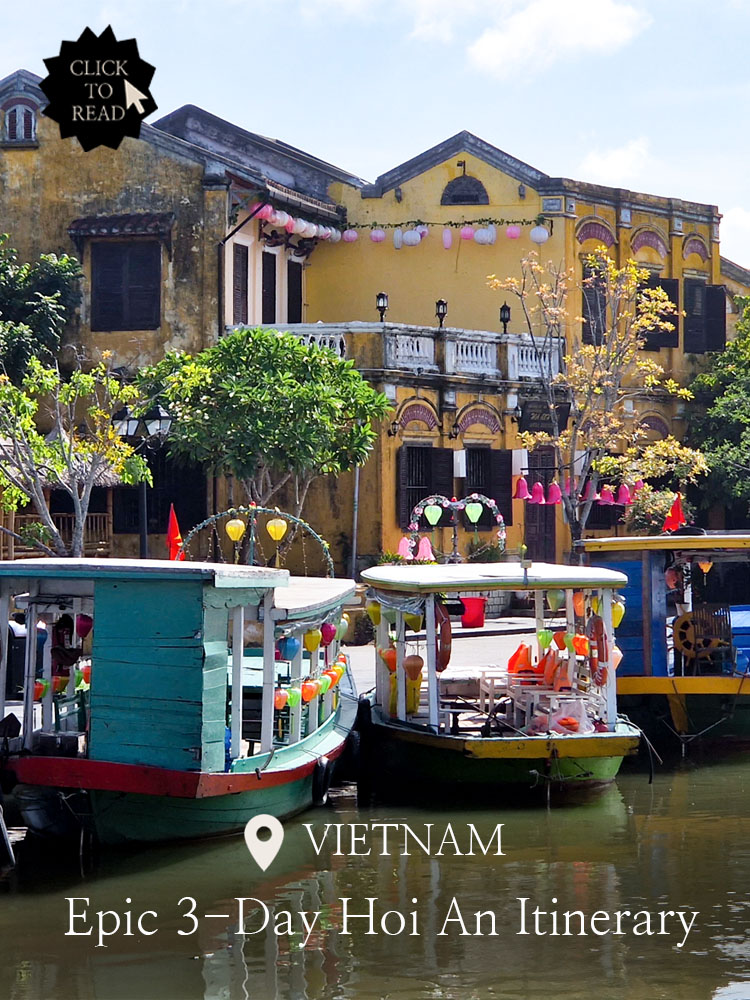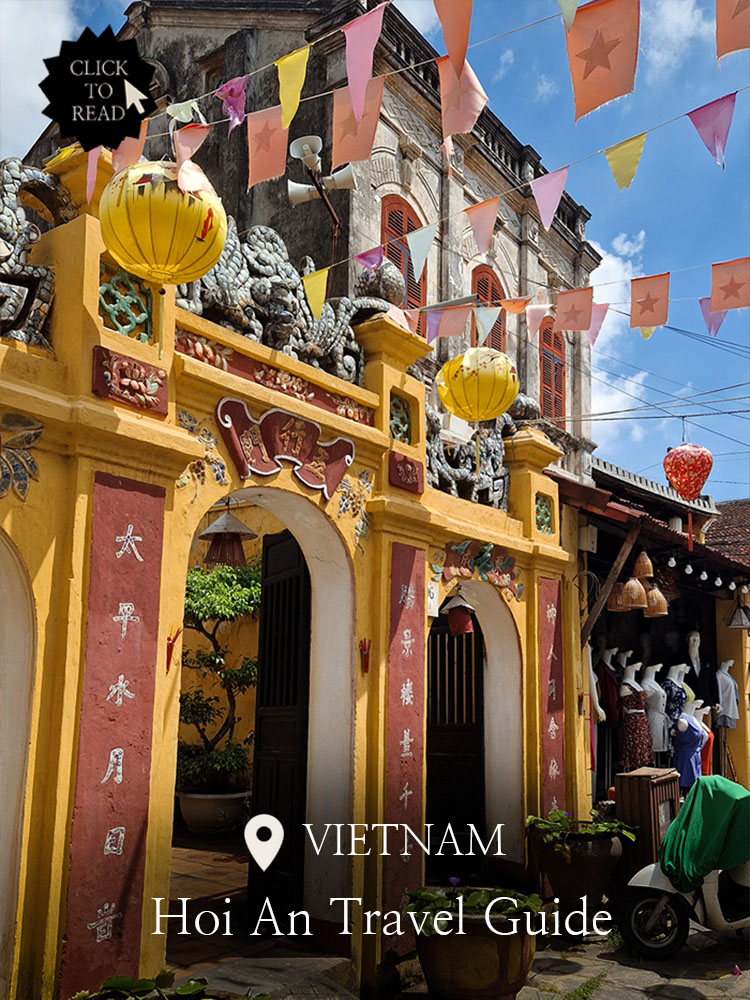A Complete Travel Guide to Ho Chi Minh City – All you need to know
In this complete travel guide to Ho Chi Minh City, we focus on all the practical information you may need to plan an awesome trip to this wonderful metropolis in the South of Vietnam! Find out how to get to Ho Chi Minh City, where to stay as well as what highlights you absolutely should not miss while there! So, let’s get travel planning!
Note: This post may contain affiliate links. By interacting with these links, you can support us and our website at no extra cost to you🍀! Our affiliate links are marked by an *, so you can recognise them in advance. For more information, read our Disclaimer.
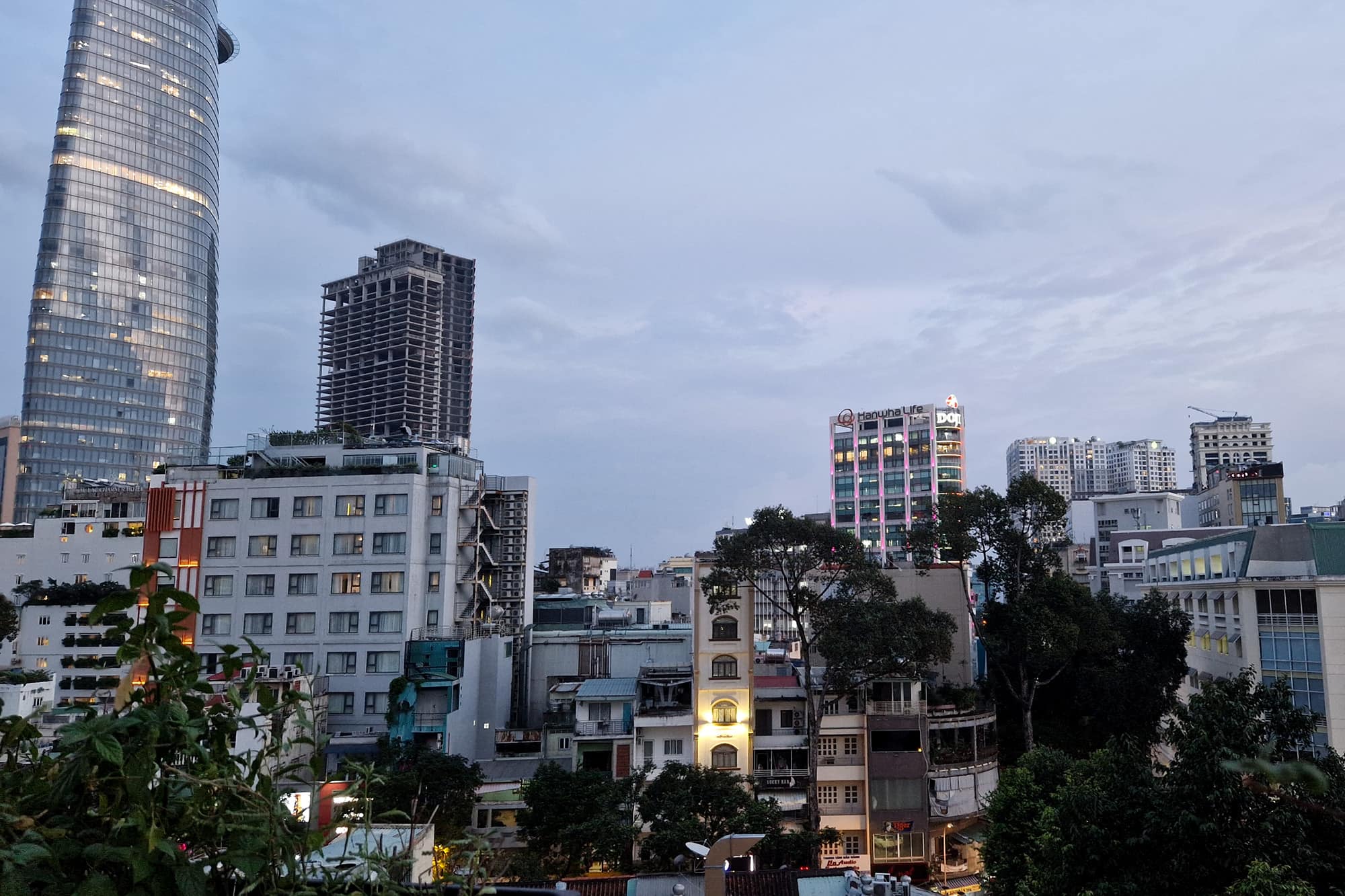
Complete Travel Guide to Ho Chi Minh City
For most people a stop-over in Ho Chi Minh City is a must when planning a complete North to South (or vice versa) Vietnam trip! And rightly so. We very much enjoyed our time exploring this lovely city.
For us, it was the perfect start to our time in Vietnam! You can however also easily visit the city for a few days as a lay-over on your way to another destination in (Southeast) Asia!
In this quick travel guide, you will find out how to easily plan your own perfect trip to Ho Chi Minh City, as we answer the most frequently asked questions when planning said trip. Sounds good? Then, let’s get started.
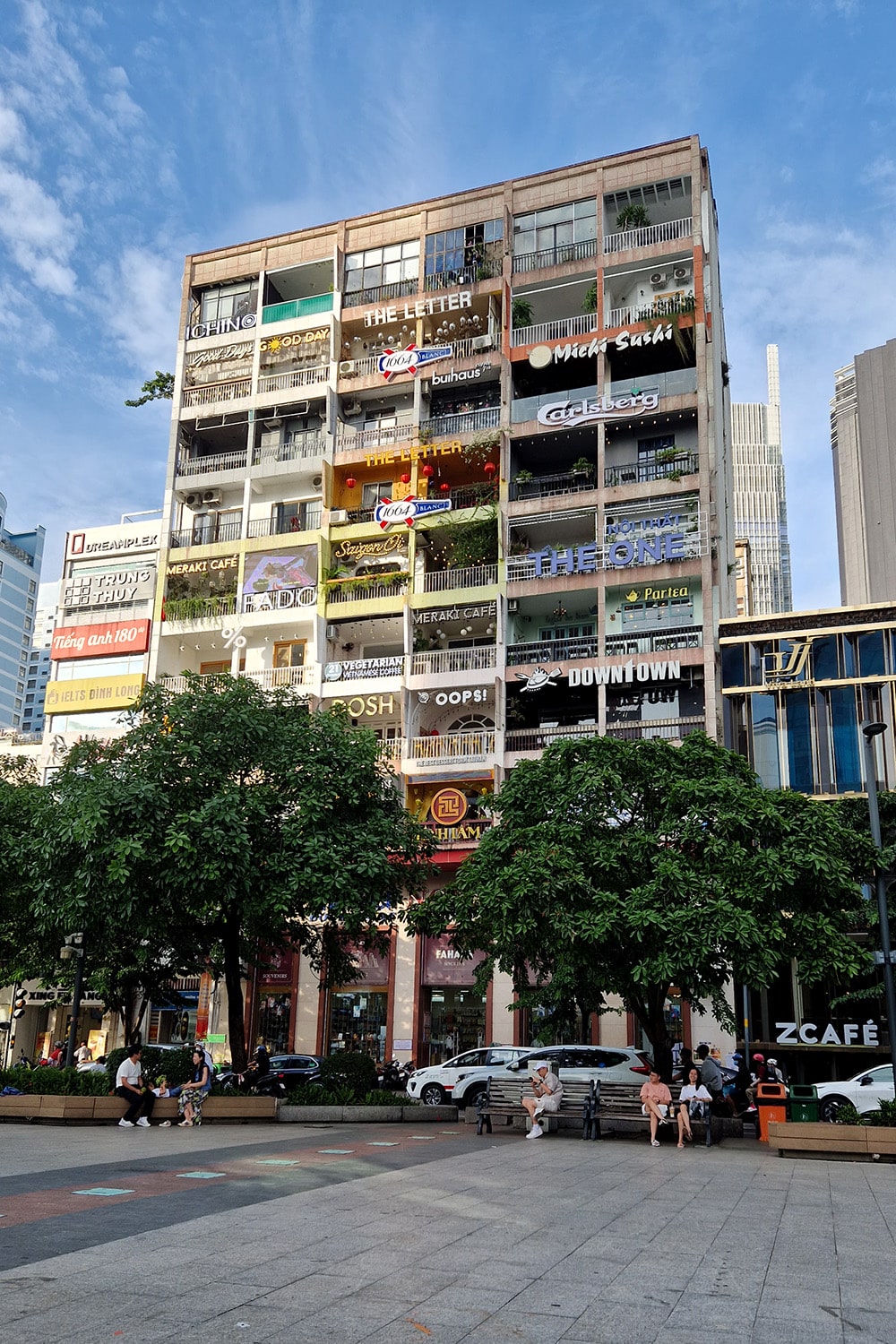
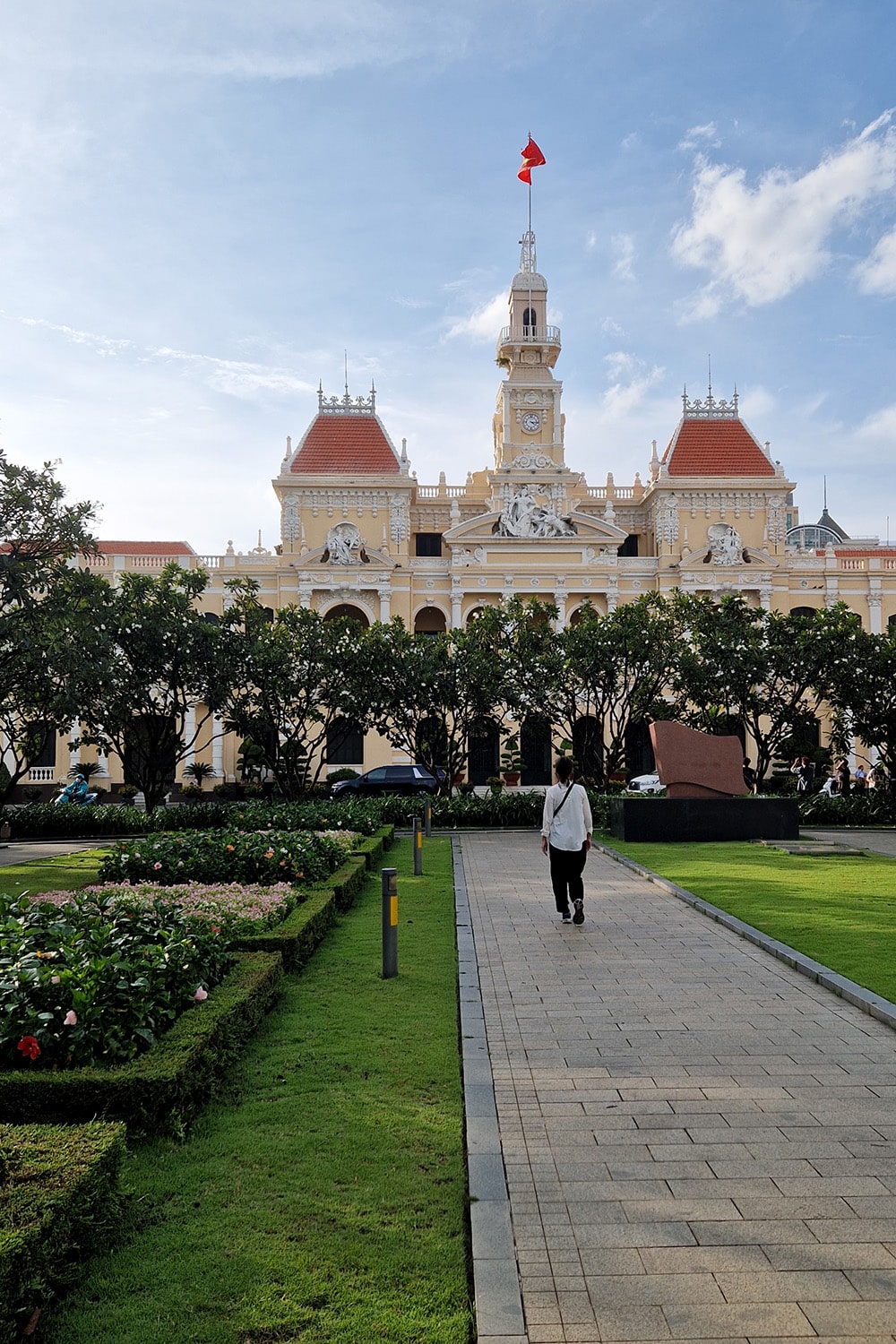
First time travelling to Vietnam? Prepare for your upcoming trip with our
Is Ho Chi Minh City worth visiting?
This first section is for those of you that are not quite decided yet on whether you should travel to Ho Chi Minh City or not. If you already know for certain that this trip is going to happen, simply skip to ‘Know this when planning your trip to Ho Chi Minh City‘ or ‘How to best get to Ho Chi Minh City‘.
Ho Chi Minh City vs. Hanoi, which one is better?
Funnily enough, this is one of the most frequently asked questions when it comes to travelling Ho Chi Minh City. Or, I guess, deciding on whether you should travel to Ho Chi Minh City or not.
First of all, I want to start by saying that no city is truly “better” than the other. Personally, we liked both and can definitely recommend visiting both. However, for slightly different reasons. So, should you visit Ho Chi Minh City or Hanoi on this next trip?
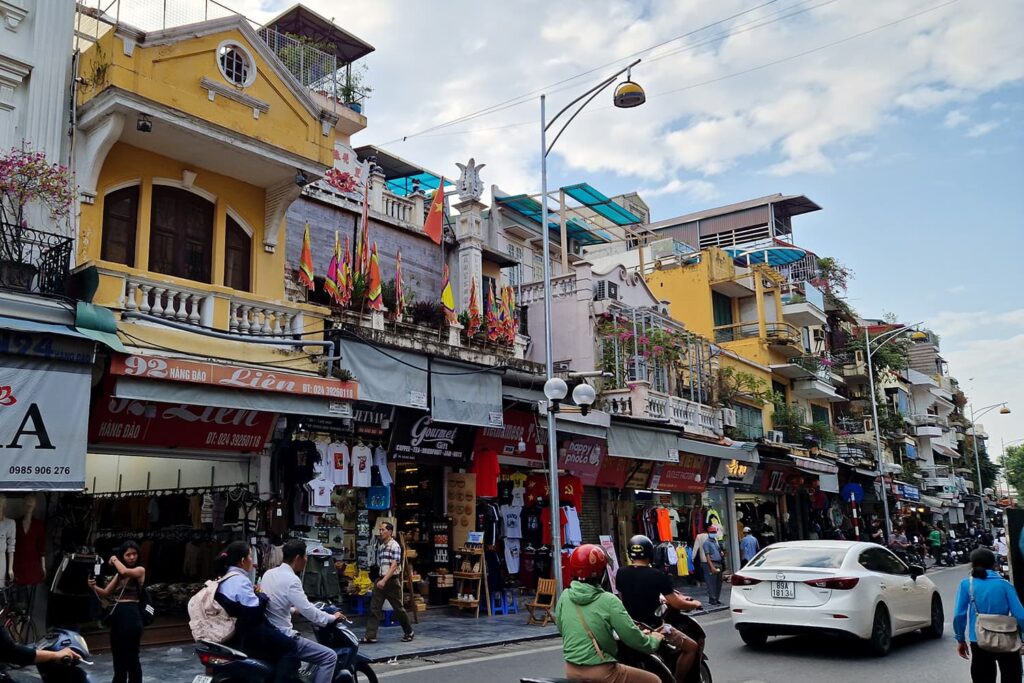

When comparing both cities, Hanoi is undoubtedly the one that has more to do and is probably a bit more exciting as well if you are looking for those bustling streets and are into street photography. So, if you truly only have time to visit one, i.e. you are travelling to Vietnam for a city trip only or a lay-over, personally we would probably lean towards saying go for Hanoi.
This however does not mean that we do not recommend visiting Ho Chi Minh City!
So, who should visit Ho Chi Minh City?
While Hanoi is busier and more chaotic, Ho Chi Minh City felt a bit more orderly to us. So, for someone that has never been to Vietnam (or Southeast Asia in general), Ho Chi Minh City will for sure be a softer launch into Vietnamese culture.
This is also why we usually recommend travelling Vietnam from South to North rather than the other way around for first time visitors!
Ho Chi Minh City is home to some really stunning buildings from the colonial period, our favourite one being the postal office. Which is still operational to this day! We highly recommend going there to send a post card!
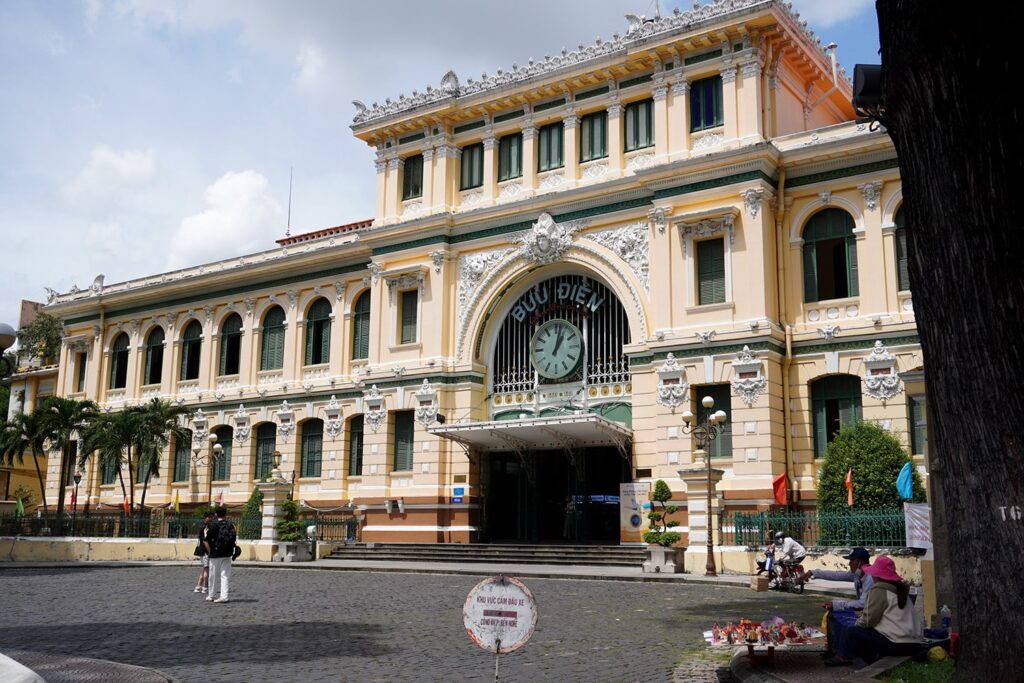

Also this is probably the city you want to go to if you are interested in remnants from the Vietnam War. Ho Chi Minh City is not only home to the War Remnants Museum, but also the starting point of most day trip tours to the Cu Chi Tunnels*.
And finally, Ho Chi Minh City is the gateway to Vietnam’s South, e.g. the Mekong Delta, Da Lat or even Nha Trang as well as a great place to start or end a trip to Cambodia!
Read more about what to see and do in Ho Chi Minh City:
Wondering what a trip to stunning Cambodia may look like? Check out
⛅ When is the best time to visit Ho Chi Minh City?
The best time to visit Ho Chi Minh City is from December to April. Ho Chi Minh City is located in the South of Vietnam quite close to the Cambodian border, which is why ideal travel times are very much the same. For this reason it is very easy to combine your trip to Cambodia with a stop-over in Ho Chi Minh City or vice-versa.
Note: Usually we talk about the best time to visit a specific country on the dedicated country travel page. However, ideal travel times are so vastly different throughout Vietnam depending on where you are going that we thought it might be a good idea to mention the best travel time for each specific destination in said destination travel guide!
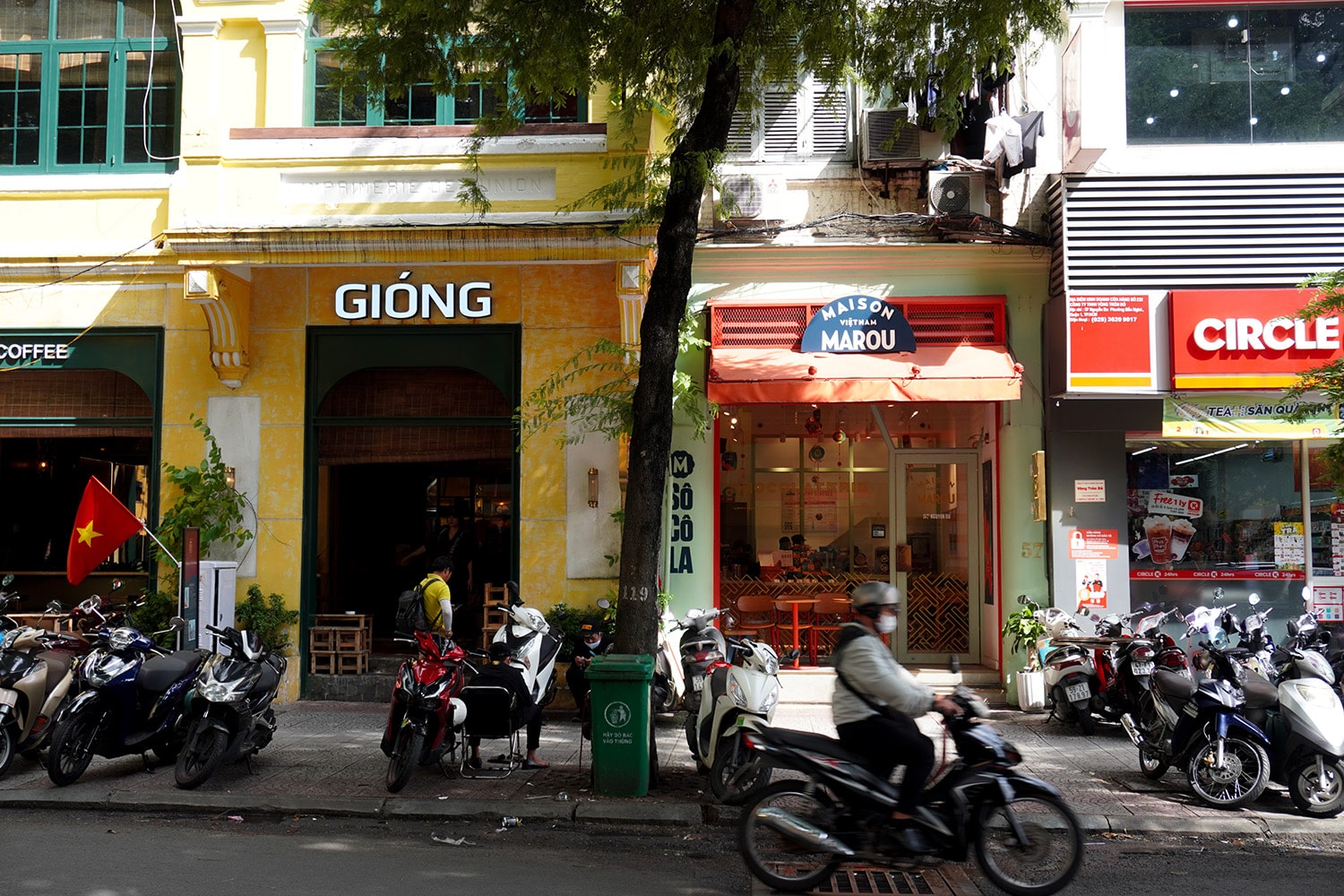
How many days are enough for exploring Ho Chi Minh City
While Ho Chi Minh City is by no means a small city, when compared to other cities it actually does not take that much time to see everything there is to see. As such, three days are a good measure of time to spend in the city.
This allows you to visit most highlights within the city plus do a half-day trip to the Cu-Chi tunnels*, which are located not that far outside of Ho Chi Minh City.
💼 Ho Chi Minh City Travel Essentials
🛜 Get a SIM Card or eSIM. In case you prefer physical SIM Cards - either get a Viettel SIM Card (SGN Aiport Pick-up) via Klook* or buy one directly at a local Viettel store. For eSIM we recommend a Viettel eSIM obtainable via Klook*.
📱 Essential Apps for Vietnam: WhatsApp & Grab. Grab for getting around. WhatsApp because often times in Vietnam the communication with tour or transportation operators is done via WhatsApp.
🚌 Book your transportation around Vietnam via 12 Go Asia*.
🛂 E-Visa. If your country is not on the Visa Exemption List (which most aren't), then you will need to get an E-Visa via the official E-Visa Website.
🔌 Power Plug Adapter. In Vietnam you will find power plugs of the type A, C, F and sometimes even G. To be on the safe side, bring an adapter!
How to get to Ho Chi Minh City
The best way to get to Ho Chi Minh City will very much depend on where you are travelling from. Are you travelling from within Vietnam or from abroad? And, if you are visiting from abroad, are you getting there from close-by or further overseas? Let’s take a closer look at your best options!
✈️ Fly to Ho Chi Minh City from overseas
If you are travelling from overseas, then getting to Ho Chi Minh City is easiest by plane. Direct flights to Ho Chi Minh City operate from quite a lot of destinations within Asia such as e.g. Singapore, Malaysia, Thailand, South Korea, India, UAE, China, Japan and so on.
If you are travelling from further overseas, e.g. from Europe, Australia or North America, there are very few direct flights. To give you an example, Vietnam Airlines offers direct flights to Germany, France and the UK only 3-4 times per week from Ho Chi Minh City. So, your best bet (and the cheaper option) is probably to travel to Ho Chi Minh City with a lay-over in one of the previously mentioned destinations within Asia.


🚞 Travel to Ho Chi Minh City from within Vietnam
Most people visit more than one destination within Vietnam when there. If that is you as well, chances are high that you are travelling to Ho Chi Minh City from somewhere else within the country. There are three main ways to travel around Vietnam: Either you fly, take the train or the bus. Which one is best naturally depends on where you are travelling from.
A good resource for getting a first idea of your options, plus their associated price range and travel times, is the 12 Go Asia website*. In general, 12 Go Asia is the go-to website for booking transportation around Southeast Asia. We certainly booked all our transfers within Vietnam through their site.
Now, let’s have a closer look at your various options.
1. The Sleeper Train
Taking a sleeper train in Vietnam was an item on our bucket list so when the opportunity presented itself, we knew we had to tick it off our list! However, we took the sleeper train travelling onwards from Ho Chi Minh City to Da Nang, not to get to Ho Chi Minh City. Why?
Well, you should know that the sleeper train travelling to Ho Chi Minh City starts its journey all the way up north in Hanoi. Which is where they put new sheets on the beds. So if you catch the sleeper train, let’s say in Da Nang to travel to Ho Chi Minh City, chances are that someone has slept in your bed already somewhere on the long journey from Hanoi to Da Nang. At least that’s what we heard!
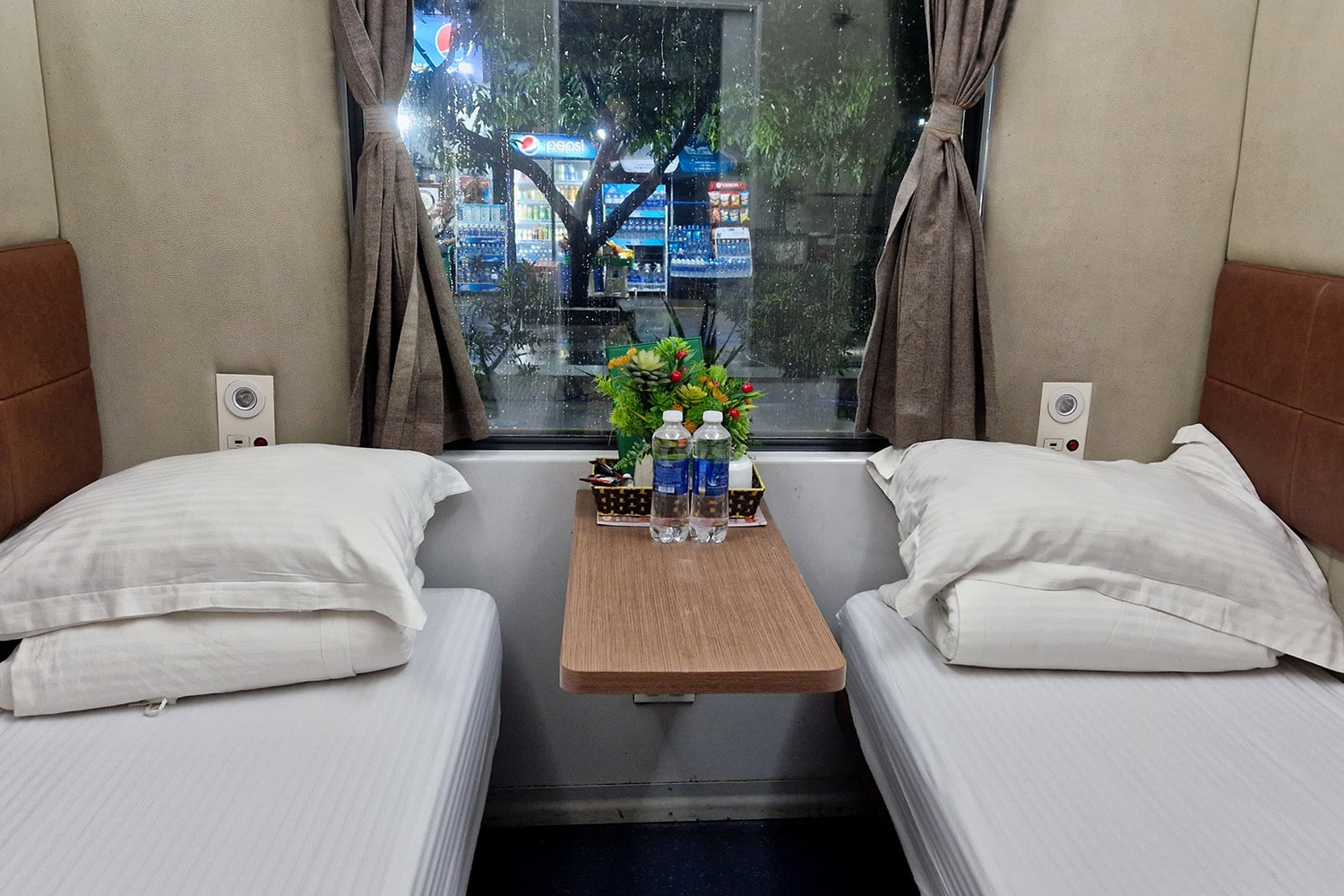
That’s why we would not necessarily recommend taking the sleeper train to get to Ho Chi Minh City (except if you really do not care about that). In Ho Chi Minh City, the sleeper train starts its journey anew towards the north and prior to that, clean sheets are put on the beds again;).
Learn more about popular Sleeper Train routes, things to watch out for + what essentials you should bring:
2. Fly to Ho Chi Minh City from Hanoi or Hoi An
If your Vietnam Itinerary requires you to travel from Hanoi straight to Ho Chi Minh City, then we would strongly recommend you to fly. It may not seem so right away when looking at the map, but Vietnam is huge. Travelling from the north all the way to the south will take you likely more than 33 hours on the sleeper train or sleeper bus. A flight, by comparison, can get you there in under 2 hours and is likely going to be cheaper as well.
The same goes for travelling straight to Ho Chi Minh City from Hoi An/Da Nang. Via land, this journey will take you somewhere between 16-19 hours. By plane you can get there in a little over one.
In other words, if you are on a time crunch and required to travel these distances without any stopovers in between, then we would recommend flying over travelling via land any day.


3. Take the bus to Ho Chi Minh City from closer-by destinations
If you are travelling to Ho Chi Minh City from somewhere in the south of Vietnam (or from Cambodia), then bus travel will be your best option. Down below you can find an overview of some of the more popular routes.
Travel to Ho Chi Minh City by Bus:
🚌 from Can Tho (Mekong Delta): Travel Time: 4h; Price: ~8€/9$
🚌 from Mui Ne (Sand Dunes): Travel Time: 3h30min; Price: ~7€/8$
🚌 from Da Lat: Travel Time: 7-8h; Price: ~15-20€/17-23$
🚌 from Nha Trang: Travel Time: 6h; Price: ~17€/19$
🚌 from Phnom Penh (Cambodia): Travel Time: ~6-7h; Price: ~30€/35$ with Giant Ibis, the company we went with for the Cambodia/Vietnam border crossing. Can definitely recommend them if you do the same journey! Note: Make sure to have your Vietnam E-Visa sorted before the trip.
🛏️ Where to stay in Ho Chi Minh City
Personally, we would recommend staying in the city’s District 1. Why? For one you are close to most attractions and could easily get there on foot. Two, if you book a day tour to e.g. the Cu Chi Tunnels or the Mekong Delta, most tour operators offer pick-up at your accommodation if the latter is located in District 1.
Since District 1 is so popular among tourists, you can find a great many hotels in this area. Which is why you should not have much trouble to find a good hotel in your budget*. Down below you can find a few suggestions.
Hotel Recommendations for Ho Chi Minh City District 1
🛏️ Nicecy Ngan Ha Hotel*. Located conveniently next to Ben Thanh Market, this hotel offers simple but clean rooms, plus breakfast (served on the small hotel roof) is included. Ideal for budget travellers. We stayed here and ended up quite liking it. Price: ~26€/29$ per night.
🛏️ Kin Hotel Ly Tu Trong*. A newer hotel located only one street away from Ben Thanh Market. This area is actually perfect for finding good restaurants and cafés! Price: ~44€/50$ per night.
🛏️ Hotel Continental Saigon*. This one is for those of you that wish to try something a bit more fancy. The hotel is located inside a French colonial building in the heart of District 1, right next to the Opera House. Price: 70€/79$ per night.


What is the best way to get around?
If you stick mostly to Ho Chi Minh City’s District 1, then you will find that most sights are actually very much in walking distance. We for one ended up walking to most spots and it was absolutely fine. For exploring sights that are located further outside of the first district, we would suggest using Grab.
Parts of District 3 are also still in walking distance (i.e. the War Remnants Museum). However if you wish to visit e.g. Tân Định Catholic Church (a stunning pink church), taking a Grab may be more convenient.
Never heard of Grab before? Grab is basically the Southeast Asian equivalent of Uber. Great for getting take-away food deliveries or organising single rides from A to B! We usually rely on it quite a bit when travelling Southeast Asia😆!
🌟 Ho Chi Minh City Highlights NOT to Miss!
Since this post focusses mostly on the planning part of your trip to Ho Chi Minh City, we will not go into too much depth on the topic of what to see and do while there. More information on that can be found in our separate 3-Day Ho Chi Minh City Itinerary! Nonetheless, down below, you can find a quick overview of experiences you should not miss out on while in Ho Chi Minh City!
🖊️ Ho Chi Minh City Must-Do’s
✉️ Old Post Office of Saigon. The postal office is still in operation (albeit a bit more touristy now). A great place to write and send a post card!
🍜 Eat Michelin Guide Pho at Phở Việt Nam, a small local restaurant located not far away from Ben Thanh Market! For desert head to Cà phê Linh (right next to it) for a delicious coconut coffee!'
🛵 Do a Street Food Tour by Motorbike. If this is your very first stop in Vietnam, then this street food tour is for you*! Get an introduction to local cuisine + experience what it's like to take on Vietnam's streets by motorbike (without having to drive yourself)!
⛪ Visit stunning churches. Ho Chi Minh City is home to some stunning churches. Notably the Notre Dame Cathedral of Saigon and Tân Định Catholic Church (the pink one) should not be missed!
🍹 Get a Drink on a Rooftop Bar. We love a good rooftop bar and Ho Chi Minh City has a few! (Unfortunately the one we went to has since closed down so no specific recommendation here).
🪖 Explore the Cu Chi Tunnels. No visit to this city would be complete without learning at least few bits of history and as such a day trip to the Cu Chi Tunnels* is a must!


Find out how you can experience all of Ho Chi Minh City’s highlights with our perfect 3-day itinerary!
Complete Travel Guide to Ho Chi Minh City – Final Thoughts
Whether you decide to stop by on a quick lay-over, use the city as a base for exploring Vietnam’s South more in depth or as a starting point for your perfect South to North Vietnam itinerary, Ho Chi Minh City is in our eyes a great entry point into Vietnamese culture and thus an awesome start to any Vietnam trip!
In this travel guide to Ho Chi Minh City, we went over all the information you may need to plan your own trip, i.e. the best ways to get there, where to stay, how many days to stay and so on! If there are still questions that remain unanswered, do not hesitate to leave them in the comments down below!
Save this post for later if your trip isn’t for another while! And, finally, we wish you safe and happy travels!🍀
Are you looking for more information to plan the most amazing trip to Vietnam?
or

